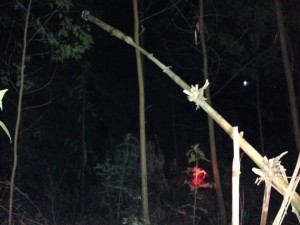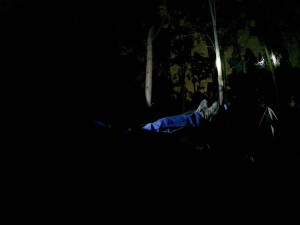
Communication is an important aspect of a primate’s life – it allows social maintenance and formation of new relationships, and lorises are no exception. If you spend as many hours with lorises as we do here at LFP, you would be aware that occasionally these little cryptic primates make audible vocalisations, mainly heard during fights when domestic issues need to be settled. These rare vocals however, are only a small fraction of the vocal repertoire produced by lorises. It was back in 1981 when the first ultrasonic vocalisation was recorded from a slow loris, but little research has since been done into this aspect of loris ecology. The main reason for this information gap is the limitation of technology. Back in the 80s, a researcher would have elaborate equipment connected to more elaborate equipment which then gave a hint at what frequency the noise was leaving the individuals mouth. Now I can head up into the forest, holding a note pad and a box not much bigger than a GameBoy Color that will record all the frequencies out of our hearing range.
My research is looking into behavioural contexts of the ultrasonic vocalisations used by our loris population. I want to know what calls they are making and why they are making them. I know what you are thinking- how can understanding an inaudible noise help our conservation efforts towards this endangered species? The simple answer is knowledge. Gaining knowledge of any part of an animal’s ecology and behaviour is hugely important to its conservation as it will provide a whole new way to reference the health of a population. The goal is to create a catalogue of calls characteristic to wild populations that can be used as an indicator of population health in other wild and rescue centre lorises. For wild populations, the ultrasonic monitoring may indicate stress levels in populations within fragmented forests while in reintroduction centres ultrasonic monitoring may identify highly aggressive calls between two newly introduced individuals, preventing avoidable injury or fatalities to this Critically Endangered species.

Like all research, it is going to take time. With over 100 hours of recordings already sifted through, I have only managed to catch a handful of calls, including mother Shirley calling out to her new-born baby during a forage. Listening through an ultrasonic set of ears is a fascinating way explore the forest, especially during the dark of night, where a whole lot of unseen eyes are watching you…
- Dan Geerah, LFP Volunteer
